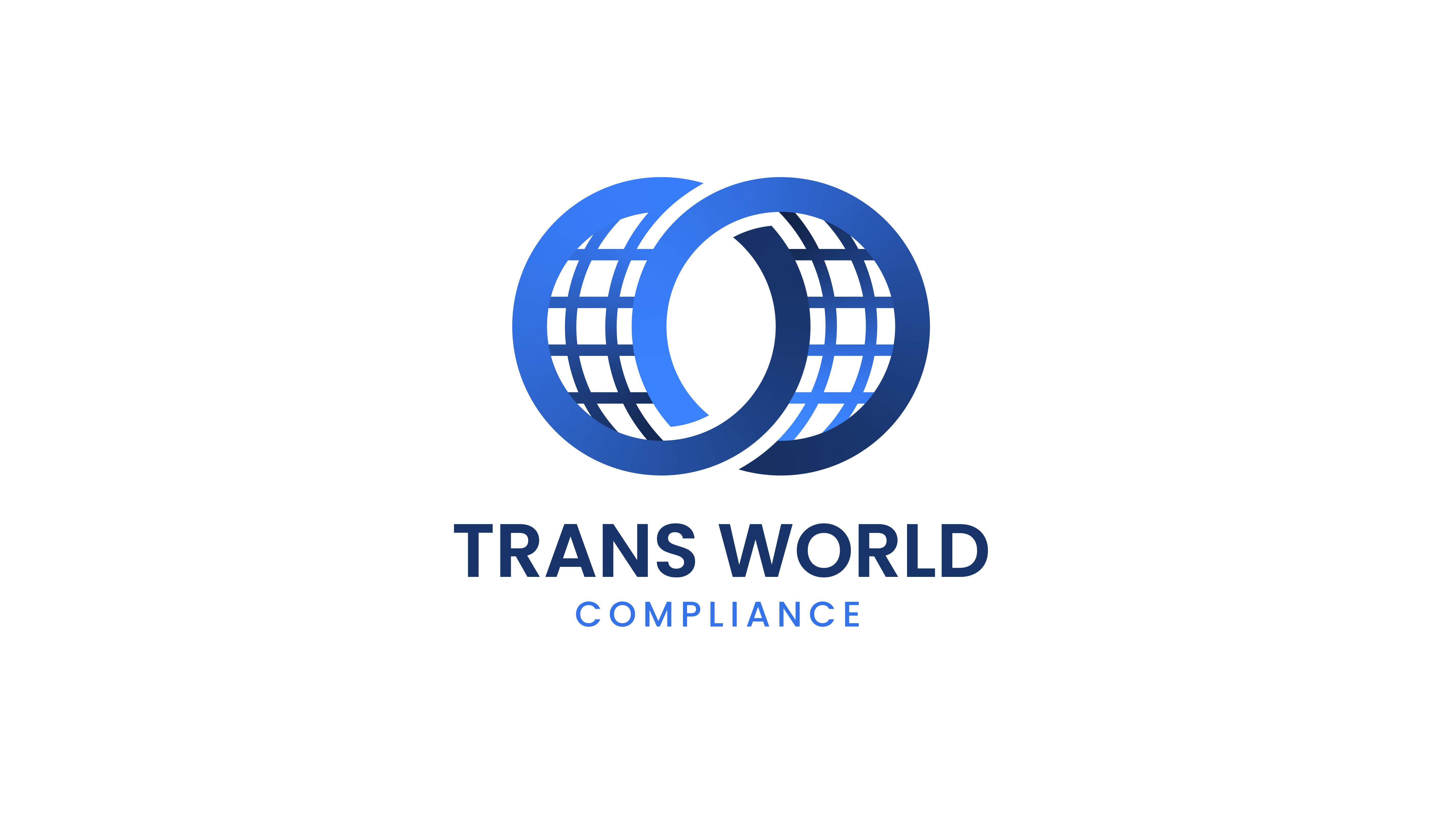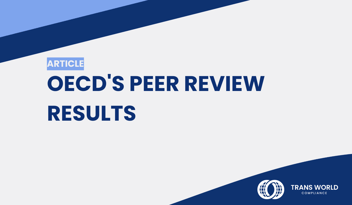OECD's Crypto Asset Reporting Framework: everything you need to know
The Organization for Economic Co-operation and Development (OECD) announced new Crypto Asset Reporting Framework (CARF) rules on October 10. The updated OECD crypto reporting framework incorporates modifications to the March 2022 version of the public consultation document. The revisions address concerns voiced by numerous jurisdictions and industry participants, such as financial institutions and service providers.
Now, jurisdictions must establish laws and administrative procedures to ensure successful implementation and adherence to the CARF reporting and due diligence procedures, as it has been modified to comply with existing due diligence and Automatic Exchange of Information (AEOI) regulations.
In this blog post we review the history behind the CARF, the building blocks it was designed around, its interaction with the Common Reporting Standard (CRS), and crypto reporting.
Brief background on the Crypto-Asset Reporting Framework
The Crypto-Asset Reporting Framework (CARF) is a response to a G20 request that the OECD design a framework for the automatic transmission of information on crypto-assets between jurisdictions.
Together with G20 countries, a new transparency initiative has been created in response to the rising acceptance of crypto-assets for a wide range of investment and financial applications.
In contrast to conventional financial products, crypto-assets can be transferred and held without the involvement of traditional financial intermediaries, such as banks, and without any central administrator having complete visibility over either the transactions conducted or the crypto-asset holdings. This means that crypto-assets are not covered by the OECD's Common Reporting Standard (CRS), which increases the possibility of tax evasion with their use, as well as undermining the progress made by the adoption of the CRS regarding tax transparency.
“The Common Reporting Standard has been very successful in the fight against international tax evasion. In 2021, over 100 jurisdictions exchanged information on 111 million financial accounts, covering total assets of EUR 11 trillion,” OECD Secretary-General Mathias Cormann said. “Today’s presentation of the new crypto-asset reporting framework and amendments to the Common Reporting Standard will ensure that the tax transparency architecture remains up-to-date and effective.”
In this spirit, the CARF will guarantee the transparency of crypto-asset transactions by automatically exchanging information with the residency jurisdictions of taxpayers on an annual basis, in a standardized manner comparable to the CRS. Under the CARF, entities or persons that facilitate exchange transactions in crypto-assets for or on behalf of clients would be required to file a report.

Crypto-Asset Reporting Framework's building blocks
The rules and commentary of the CARF have been designed around four key building blocks:
1. Scope of Crypto-Assets to be covered
The suggested definition of Crypto-Assets under the CARF emphasizes the use of cryptographically secured distributed ledger technology, as this is the defining characteristic underlying the creation, holding, and transferability of Crypto-Assets. The definition also contains a reference to "similar technology" to ensure that it can encompass future technological advancements that work in a functionally similar manner to Crypto-Assets and pose comparable tax risks.
Crypto-Assets include:
-
stablecoins,
-
derivatives issued in the form of a Crypto-Asset, and
-
certain non-fungible tokens (NFTs) that can be stored and exchanged in a decentralized way without the interference of traditional financial intermediaries.
2. Intermediaries and other service providers in scope
Intermediaries and other service providers facilitating exchanges between Relevant Crypto-Assets play a crucial role in the Crypto-Asset market. As a result, it is proposed that Entities or people providing Exchange Transactions in Relevant Crypto-Assets for or on behalf of consumers should be considered Reporting Crypto-Asset Service Providers under CARF.
Relevant Crypto-Asset refers to any Crypto-Asset that is neither a Central Bank Digital Currency nor a Specified Electronic Money Product, or any Crypto-Asset for which the Reporting Crypto-Asset Service Provider has concluded that it cannot be used for payment or investment purposes. Most Relevant Crypto-Assets covered by the CARF also come within the scope of the Financial Action Task Force (FATF) Recommendations. This ensures that the due diligence requirements can, to the greatest extent feasible, build on current AML/KYC duties.
3. Reporting requirements
The CARF framework includes new certification and cross-border reporting regulations. CARF requires the gathering of Self Certification forms for accounts or wallets used for the purchase, sale, transfer, or storage of Crypto-Assets.
Under CARF, the intermediaries and Crypto-Asset Service Providers are required to obtain Self Certification documents from all crypto dealers and asset holders. Through a certification process, it is necessary to guarantee that the information listed below remains valid.
The modified CARF regulations no longer stipulate that self-certification documents must be refreshed every 36 months.
4. Due diligence procedures
The CARF contains the due diligence procedures that Reporting Crypto-Asset Service Providers must follow when identifying their Crypto-Asset Users, determining the relevant tax jurisdictions for reporting purposes, and collecting the relevant information necessary to comply with the CARF's reporting requirements.
The purpose of the due diligence requirements is to enable Reporting Crypto-Asset Service Providers to determine the identity and tax residence of their Individual and Entity Crypto-Asset Users, as well as the natural persons controlling certain Entity Crypto-Asset Users, in an efficient and reliable manner.
The due diligence procedures build on the self-certification-based process of the CRS and the existing AML/KYC duties codified in the 2012 FATF Recommendations, including amendments in June 2019 regarding obligations applicable to virtual asset service providers.

How does the Crypto Asset Reporting Framework interact with the Common Reporting Standard?
As the CARF is a separate and complementary framework, certain Entities will report under both the CRS and the CARF. The CARF was established to report information on Crypto-Assets to mitigate risks associated with tax compliance. To lessen reporting obligations, however, special attention was paid to the efficient and frictionless interaction between the CARF and the CRS, as evidenced by the following characteristics:
-
The definition of Relevant Crypto-Assets excludes from the scope of the CARF Specified Electronic Money Products and Central Bank Digital Currencies, as reporting on these assets is mandated by the CRS;
-
As certain assets qualify both as Relevant Crypto-Assets under the CARF and as Financial Assets under the CRS (e.g., shares issued in crypto form), the CRS offers an option to deactivate gross proceeds reporting if such information is reported under the CARF;
-
The CRS covers indirect investments in Relevant Crypto-Assets via conventional financial products, such as derivatives or interests in investment vehicles; and
-
When appropriate, the due diligence procedures are aligned with the CRS due diligence standards in order to minimize costs on Reporting Crypto-Asset Service Providers, especially when they are also subject to CRS responsibilities as Reporting Financial Institutions. Specifically, the CARF permits Reporting Crypto-Asset Service Providers who are also subject to the CRS to rely on the due diligence procedures for New Accounts conducted for CRS purposes.

Amendments to the Common Reporting Standard
As prospective alternatives to traditional financial products, the first full assessment of the CRS resulted in revisions to include new financial assets, products, and intermediaries in its scope, while avoiding duplicative reporting with the CARF. In order to improve the reporting outcomes under the CRS, additional amendments have been made, including the introduction of more detailed reporting requirements, the strengthening of due diligence procedures, the introduction of a new, optional Non-Reporting Financial Institution category for Investment Entities that are genuine non-profit organizations, and the creation of a new Excluded Account category for capital contribution accounts.
Further developments in crypto regulation
In the coming months, the OECD will advance its work on the legal and operational instruments to facilitate the international exchange of information gathered on the basis of the CARF and to ensure its effective and widespread implementation, including the timing of the initiation of exchanges under the CARF.
The OECD has also proposed to the G20 a series of additional adjustments to the CRS, which are designed to modernize its scope to encompass digital financial products fully and to improve its operation by incorporating country and company expertise. As with the CARF, this work will be supplemented by an update to the international legal and operational arrangements for the automatic exchange of information pursuant to the modified CRS, as well as a coordinated schedule for implementing the agreed-upon revisions.
An implementation package is now being developed to ensure the consistent local and international application and successful implementation of the CARF. The implementation package will include a framework of bilateral or multilateral competent authority agreements or arrangements for the automatic exchange of information collected under the CARF, IT-solutions to support the exchange of information, and a further elaboration of the Section V requirements of the CARF.
Furthermore, work will progress on implementing the relevant channels for the automated exchange of information in accordance with the modified CRS, and synchronized implementation schedules will be agreed upon for both the CARF and the modified CRS.

How can Trans World Compliance help you with crypto regulations?
As Crypto-assets, accounts, and wallet holders continue to grow worldwide, the best way to ensure a robust compliance with the CARF requirements, as well as the CRS requirements, is implementing an automated compliance process that is adaptable and simple to update.
Automation reduces the effort required to implement modifications as CARF is instated. It can manage requirements that vary by country or jurisdiction, since these can still modify and improve the reporting requirements under CARF.
Trans World Compliance (TWC) helps all stakeholders exceed regulatory compliance, fight international tax evasion, and reduce operational costs with precise, straightforward, and fully automated rule-based technology.
If you want to know more about what TWC has to offer, make sure to schedule a demo with our team, or contact us at sales@transworldcompliance.com.
In conclusion
Overall, the new version of the CARF by the OECD reflects several modifications that were incorporated from feedback from multiple parties, particularly from jurisdictions and financial institutions. The methodology proposed in this public consultation document will help to reduce costs and improve the overall efficiency of the current implementation of AEOI.
CARF’s objective is to ensure that the CRS and AEOI, undertaken by countries that have implemented AML/TF legislation, can function properly. In other words, CARF was created to provide a platform for uniform reporting and data exchanges within the global financial industry. With its framework now officially launched, we will undoubtedly see more jurisdictions signalling their intent to implement it in the near future.




